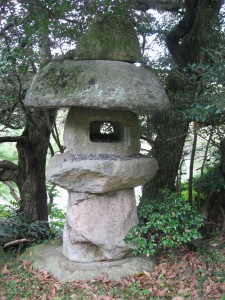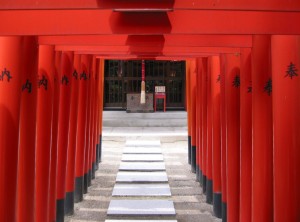The History of these Free Japanese Lessons
After completing the Berlitz, Pimsleur and Learn in Your Car Japanese audio courses, I decided to create these free Japanese lessons, with the support of my wife Noriko.
Those three courses had helped me to learn to say a number of basic sentences and thousands of Japanese words, but I had only a limited idea of the differences between “u” verbs and “ru” verbs and how to conjugate them in plain speech and polite speech. I didn’t fully understand the various ways that Japanese people “soften” their sentences to make them sound more humble or friendly. I didn’t know the passive, the causative or the passive causative verb tenses, in addition to many other details that one needs for a basic understanding of Japanese grammar.
Advantages of free Japanese Lessons like These

By this time, I had come to believe that the audio flashcards method was the best way for someone like me to learn to speak Japanese. For one thing, this method didn’t make me feel incompetent. I felt good when I was able to give a correct answer to a question, something that happened more often as I repeated lessons.
The questions were presented in my brain’s native language, so that even though I might struggle with a given question, at least I understood what the question was. If the answer that my brain arrived at was incorrect, I would sometimes laugh at myself, but fortunately no one else was present to laugh at me.
Another critical advantage of lessons in the audio flashcards format was that they required that I say all of my answers aloud in Japanese. Over time, my brain and tongue were getting used to a new way of talking and thinking that eventually became second nature.
In addition, the Japanese audio lessons that I had modified to remove redundant material allowed me to review material many times without getting bored or even arriving at a sense of diminishing returns. I could stop playback and take as much time as necessary to formulate my answers. I had a transcript to help resolve any questions that came up. As a result, I experienced very little frustration and actually found myself looking forward to the lessons (and also to the physical exercise that I usually did while listening to them).
At this point I wanted to continue Japanese language study. Experience had shown me that I was unlikely to make significant progress unless I used some version of the audio flashcards method, and there didn’t seem to be any other suitable audio courses available. So my wife and I began to develop the free Japanese lessons offered here. At first, the recordings we made were intended for my personal use, but after some time we began to feel that the lessons should be offered to a wider audience.
These Free Japanese Lessons Address Three Major Barriers to Studying Japanese
With these free Japanese lessons, I’ve tried to address three major barriers to Japanese language study. The first one is the emotional barrier, which refers to the fact that a person may lose motivation to accomplish a task if he or she doesn’t get enough positive reinforcement.

To address this problem, I’ve tried to structure these lessons in a fair way and to provide students with clues in the English questions. This has meant taking pains to translate Japanese into English literally, even when this results in English questions that sound a little awkward. I’ve tried to be consistent in using the same English words to translate Japanese words.
Testing these free Japanese lessons over and over, I’ve made hundreds of corrections to them over time, trying to make them more accurate and user-friendly. As a result, students should be able to complete them with a minimum of frustration.
When one is studying Japanese over a prolonged period, it’s satisfying to have a number of easy questions mixed in with the difficult ones. When students are able to answer questions with ease, that reinforces the progress already made and encourages them to press on. No doubt you will find some very difficult questions in these lessons, but I think you’ll find a lot of easy ones as well.
We provide a complete transcript of these free Japanese lessons, including extensive grammatical explanations and context-specific answers to questions that have come up as I studied the material. In addition, we provide a grammar guide, a guide to the use of the particles ga and wa, and a guide to Japanese verb tenses.
A second barrier to Japanese language study is the lack of time to devote to the task. Audio flashcard lessons use time efficiently, since they allow students to combine Japanese study with other activities, like exercising and commuting.
I hope that students will be motivated by these lessons to take long, enjoyable walks, or to exercise in other ways. If so, they may be able to improve their Japanese language skills and their health at the same time.
A third barrier to Japanese language study is cost, especially for students who live in countries with a relatively low pay scale who hope to be able to work in Japan. By providing these free Japanese lessons, we hope to make it easier for them to realize their dreams.